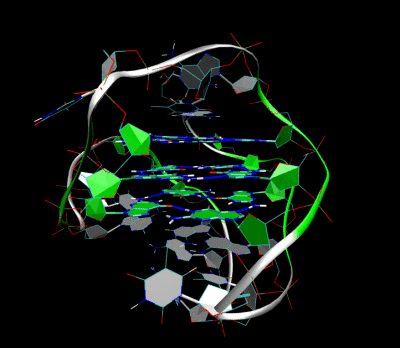β-Catenin Regulates Telomerase in Stem Cells and Cancer Cells
June 29, 2012

Three-dimensional molecular structure of a telomere (G-quadruplex). From Wikipedia
Scientists at the Max Planck Institute of Immunobiology and Epigenetics in Freiburg have gained important insights for stem cell research, which are also applicable to human tumors, and could lead to the development of new treatments. As Rolf Kemler’s research group discovered, a molecular link exists between the telomerase that determines the length of the telomeres and a signaling pathway known as the Wnt/β-signaling pathway.
Telomeres are the end caps of chromosomes that play a very important role in the stability of the genome. Telomeres in stem cells are long and become shorter during differentiation or with age, but lengthen again in tumour cells.
The Wnt/β-catenin signalling pathway controls numerous processes in embryonic development, such as the formation of the body axis and of organ primordia, and is particularly active in embryonic and adult stem cells. The β-catenin protein plays a key role in this signalling pathway. The incorrect regulation or mutation of β-catenin leads to the development of tumors.
Rolf Kemler’s research group has now shown that β-catenin regulates the telomerase gene directly, and has explained the molecular mechanism at work here. Embryonic stem cells with mutated β-catenin generate more telomerase and have extended telomeres, while cells without β-catenin have low levels of telomerase and have shortened telomeres.
This regulation mechanism can also be found in human cancer cells. These discoveries could lead to the development of a new approach to the treatment of human tumors.
Source: Max Planck Institute
No comments:
Post a Comment